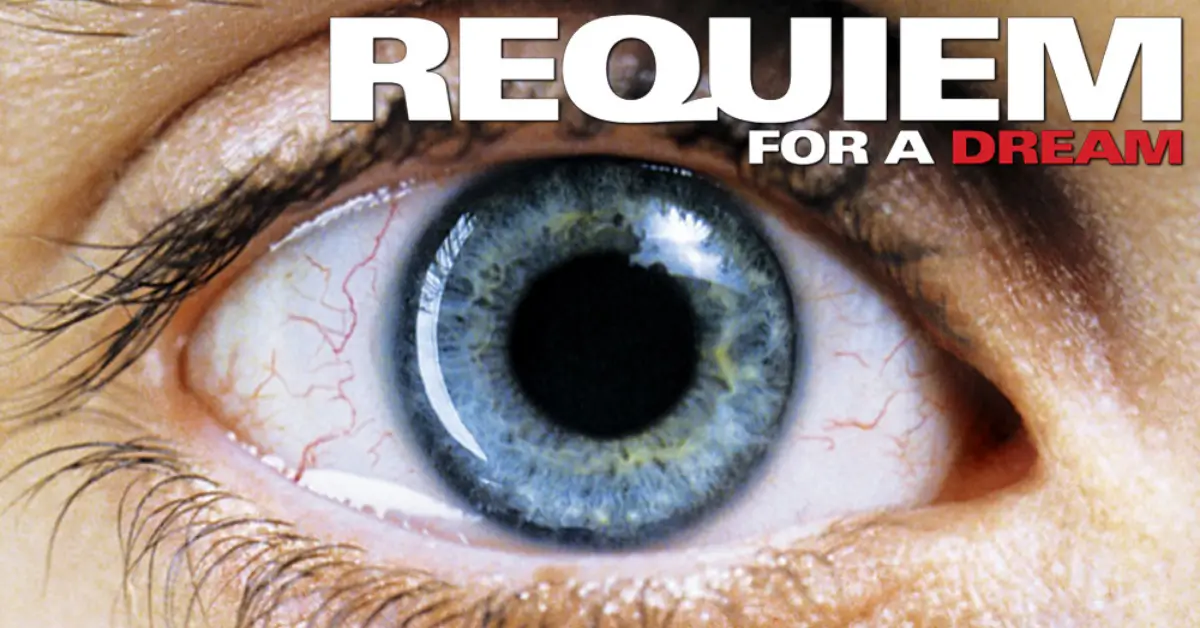Requiem for a Dream: The Harrowing Descent into Addiction
Few films have captured the devastating spiral of addiction with such visceral intensity as Darren Aronofsky’s “Requiem for a Dream.” Released in 2000, this unflinching psychological drama doesn’t merely depict addiction it pulls viewers into the subjective experience, making us feel the initial euphoria, desperate craving, and ultimate horror of substance dependence. As a profound exploration of mental health, the film illustrates how addiction functions not just as a physical dependence but as a response to emotional emptiness and unfulfilled dreams.
Thank you for reading this post, don't forget to subscribe!Basic Film Information
Title: Requiem for a Dream
Release Date & Production Year: October 27, 2000 (premiered at Cannes Film Festival, May 2000)
Director: Darren Aronofsky
Screenwriter: Darren Aronofsky and Hubert Selby Jr. (adapted from Selby’s 1978 novel of the same name)
Main Cast & Characters:
- Ellen Burstyn as Sara Goldfarb, a lonely widow obsessed with appearing on television
- Jared Leto as Harry Goldfarb, Sara’s son and a heroin addict
- Jennifer Connelly as Marion Silver, Harry’s girlfriend and fellow addict
- Marlon Wayans as Tyrone C. Love, Harry’s friend and business partner
Genre: Psychological drama
Awards: Numerous nominations including an Academy Award nomination for Ellen Burstyn as Best Actress; won multiple critics’ awards
Runtime & Rating: 102 minutes, Rated R (theatrical release); NC-17 (unrated version); contains graphic depictions of drug use, sexuality, and disturbing imagery
Plot Summary
General Overview
“Requiem for a Dream” follows four individuals whose lives are progressively destroyed by addiction. Harry, his girlfriend Marion, and his friend Tyrone develop increasing dependence on heroin while trying to build a drug-dealing business. Meanwhile, Harry’s mother Sara becomes addicted to diet pills in her quest to lose weight for a television appearance. Through parallel narratives that unfold across seasons, the film charts their collective descent from hope into despair.
Mental Health Themes
The film explores multiple facets of addiction as a mental health condition: substance dependency (heroin, amphetamines), behavioral addiction (television), and eating disorders. It also portrays co-occurring conditions including depression, anxiety, psychosis, and body dysmorphia. Perhaps most powerfully, it examines how addiction relates to unfulfilled psychological needs—Sara’s loneliness and need for recognition, Harry and Marion’s search for meaning and intimacy, and Tyrone’s desire to escape poverty and honor his mother’s memory.
Key Turning Points
Several pivotal moments mark the characters’ deterioration: Sara’s first experience of amphetamine-induced euphoria; Harry and Marion’s decision to begin using their drug supply; Tyrone’s arrest; Sara’s increasing hallucinations; Marion’s decision to prostitute herself for drugs; and Harry’s infection from repeated injections. Each turning point represents another step in their downward spiral, another surrender of autonomy to addiction.
Ending Analysis
The film culminates in a devastating montage showing each character reaching their respective rock bottom: Sara undergoes electroconvulsive therapy after experiencing drug-induced psychosis; Harry’s infected arm is amputated; Marion degrades herself completely for drugs; and Tyrone suffers in prison. Rather than offering resolution or redemption, the ending forces viewers to confront addiction’s ultimate consequences. This uncompromising conclusion powerfully communicates that addiction, when left untreated, leads not to growth but to profound loss.
Setting & Cinematic Techniques
Filming Locations
The film is set primarily in Coney Island, Brooklyn—a location that symbolically reinforces the theme of faded dreams and tarnished Americana. The amusement park, once a glittering attraction, appears worn and melancholic, mirroring the characters’ journeys from hope to disillusionment. Sara’s apartment building, with its community of elderly residents watching television in the lobby, emphasizes her isolation despite physical proximity to others.
Cinematography
Cinematographer Matthew Libatique employs revolutionary techniques to convey the subjective experience of addiction. The extensive use of extreme close-ups (particularly of dilating pupils, needles penetrating skin, and pills being consumed) creates an uncomfortable intimacy with the mechanisms of addiction. Split screens show characters in parallel moments of drug use, suggesting their emotional connection despite physical separation. The film’s accelerating rhythm, with increasingly rapid montages of drug preparation and consumption, brilliantly mimics how addiction progressively dominates the characters’ lives.
Sound & Music
Clint Mansell’s haunting score, particularly the now-iconic “Lux Aeterna” theme performed by Kronos Quartet, has become synonymous with mounting dread. The repetitive, driving composition mirrors the cyclical nature of addiction while building to an unbearable crescendo. Sound design plays an equally crucial role, with amplified sounds of pill consumption, coffee percolation, and television static creating a disorienting sensory experience that puts viewers in the mindset of the characters.
Acting & Character Portrayal
Lead Actor’s Performance
Ellen Burstyn delivers an astonishing performance as Sara Goldfarb, embodying both the character’s fragile vulnerability and her desperate determination. Her physical transformation is remarkable, but even more impressive is how she portrays the psychological disintegration caused by amphetamine psychosis. Burstyn conveys Sara’s mental decline through increasingly frantic speech patterns, paranoid reactions, and the heartbreaking confusion of someone losing touch with reality.
Supporting Cast
Jared Leto as Harry captures the tragic duality of addiction—the charming dreamer and the desperate addict—often within the same scene. Jennifer Connelly’s portrayal of Marion’s deterioration from independent artist to exploited addict is devastating in its authenticity. Marlon Wayans brings unexpected depth to Tyrone, showing how his addiction is intertwined with grief and the desire for maternal approval. Together, the ensemble creates a multi-dimensional portrait of how addiction affects different personalities and circumstances.
Accuracy & Authenticity
The film’s depiction of addiction is medically accurate in many respects, particularly in showing the progression from recreational use to dependency and the increasing tolerance that requires larger doses for the same effect. It accurately portrays withdrawal symptoms, the psychological compulsion that drives users to extreme behavior, and the physical consequences of intravenous drug use. The portrayal of amphetamine-induced psychosis in Sara’s storyline is particularly well-researched, showing the hallucinations, paranoia, and grinding of teeth associated with stimulant abuse.
Mental Health Representation: Strengths & Weaknesses
Psychological Accuracy
“Requiem for a Dream” excels in showing addiction as a complex psychological condition rather than simply a moral failing. It accurately portrays how substance use begins as a solution to emotional pain before becoming a source of suffering itself. The film demonstrates how addiction hijacks the brain’s reward system, making the pursuit of drugs more important than self-preservation. Sara’s storyline particularly illuminates how even legal, prescribed medications can lead to devastating addiction when improperly monitored.
Stigmatization vs. Awareness
The film walks a difficult line between showing addiction’s horrors without stigmatizing those who suffer from it. While some critics argue that the extreme consequences depicted might further stigmatize addiction, others contend that the film generates compassion by helping viewers understand the psychological mechanisms driving the characters’ behavior. By showing how all four characters—despite different backgrounds and substances—follow similar patterns of decline, the film emphasizes addiction’s nature as a disease that can affect anyone.
Impact on Public Perception
“Requiem for a Dream” has significantly influenced public understanding of addiction by visualizing its psychological components. Rather than portraying addicts as simply hedonistic or weak-willed, the film shows how their substance use connects to deeper psychological needs and traumas. Sara’s storyline particularly helped expand public perception of what addiction looks like, showing that it’s not limited to illegal substances or marginalized populations but can affect anyone seeking escape from emotional pain.
Critical Reception & Awards
Critics’ Reviews
The film received largely positive reviews, with critics particularly praising its unflinching approach and technical virtuosity. Roger Ebert called it “a movie so powerful it can scar, a film so tragic it stays with you long after you’ve left the theater.” Some critics found the film excessively manipulative or questioned whether its stylistic brilliance might glamorize the very addiction it condemns, but most acknowledged its extraordinary emotional impact.
Audience Reactions
Viewers often describe watching the film as a profound, disturbing experience that changed their perception of addiction. Many report being unable to watch it more than once due to its emotional intensity. The film has developed a strong cult following and is widely taught in film schools for its innovative techniques. Addiction specialists have noted that many clients cite the film as having influenced their decision to seek treatment.
Awards & Nominations
Ellen Burstyn received Academy Award, Golden Globe, and Screen Actors Guild Award nominations for her performance. The film won numerous critics’ awards and was selected for preservation in the National Film Registry in 2023 as being “culturally, historically, or aesthetically significant.” Its score has become one of the most licensed pieces of film music in history.
Cultural & Social Impact
Discussions Sparked
“Requiem for a Dream” helped shift public discourse around addiction from a primarily moral or criminal issue to a mental health concern. It sparked conversations about America’s approach to drug policy, the overprescription of amphetamines (particularly to older women), and the need for compassionate, evidence-based treatment options. The film also generated discussion about media’s role in creating unrealistic aspirations that can lead to psychological distress.
Influence on Other Films
The film’s visual style, particularly its rapid-fire editing techniques and use of extreme close-ups, has influenced countless subsequent films and television shows dealing with altered states of consciousness. Its unflinching approach to difficult subject matter helped pave the way for other filmmakers to address mental health issues with similar authenticity. The score has become shorthand for mounting tension in trailers and is frequently referenced in popular culture.
Mental Health Advocacy
While not created specifically as an advocacy piece, the film has been used in educational contexts to illustrate addiction’s psychological mechanisms and consequences. Some recovery programs show clips to help family members understand the compulsive nature of addiction. The film’s unforgettable impact has made it a cultural touchstone in discussions about the need for comprehensive mental health and addiction services.
Personal Reflection & Final Thoughts
“Requiem for a Dream” provides extraordinary insight into addiction’s psychological dimensions, particularly how it relates to unfulfilled dreams and emotional emptiness. By connecting substance abuse to universal human desires—for connection, meaning, beauty, and recognition—the film helps viewers develop empathy for those struggling with addiction while understanding its devastating power.
I would recommend this film for educational purposes and for those seeking to understand addiction’s psychological components, but with strong cautions about its potentially triggering content. It is decidedly not appropriate viewing for those in early recovery or actively struggling with addiction, as its graphic depictions could be destabilizing.
The film could have provided more context about recovery possibilities—by focusing exclusively on destruction without showing pathways to healing, it risks promoting a sense of inevitability that might discourage those considering treatment. A brief acknowledgment that recovery is possible, even from severe addiction, would have provided important balance without compromising the film’s artistic vision.
Conclusion
“Requiem for a Dream” stands as one of cinema’s most powerful explorations of addiction as a mental health condition. Through innovative filmmaking techniques and extraordinary performances, it offers viewers visceral understanding of how addiction progressively consumes lives. Two decades after its release, the film remains relevant in an era of opioid epidemics and increasing awareness of prescription drug abuse.
Beyond its specific focus on substance dependence, the film speaks to broader questions about American society’s emphasis on quick fixes and external validation—the dream of effortless transformation that can lead to nightmarish consequences. By forcing viewers to confront addiction’s ultimate toll, “Requiem for a Dream” encourages more compassionate, nuanced approaches to those suffering from this devastating condition.
What are your thoughts on the film’s portrayal of addiction as a mental health issue? Has watching “Requiem for a Dream” changed your understanding of substance dependence and its psychological roots?

